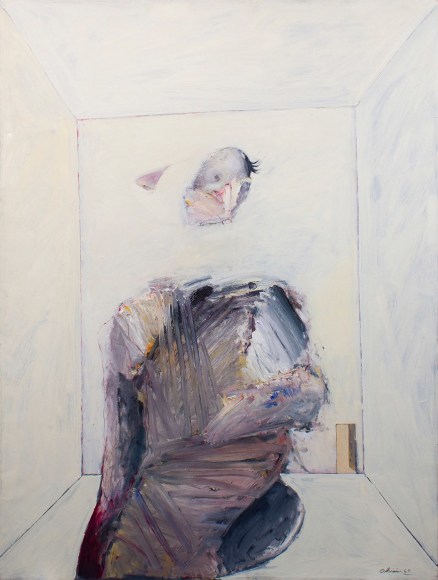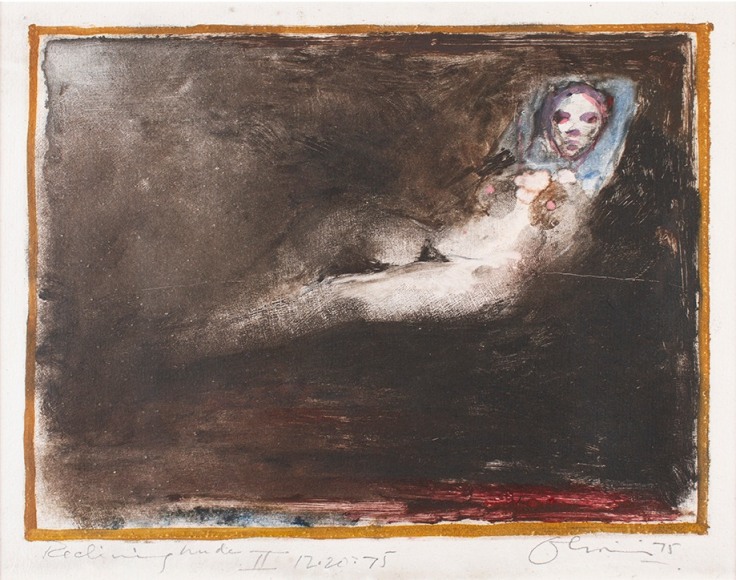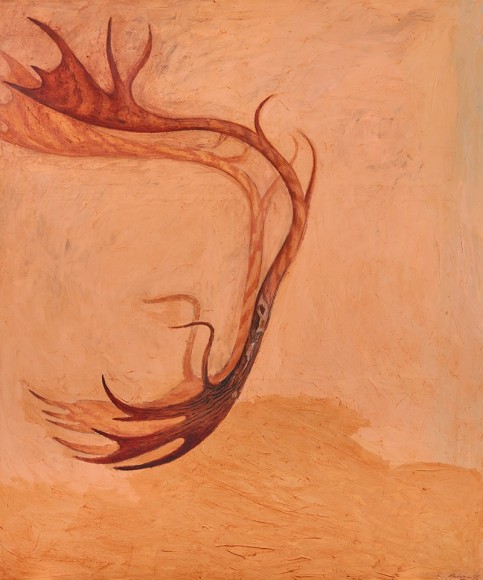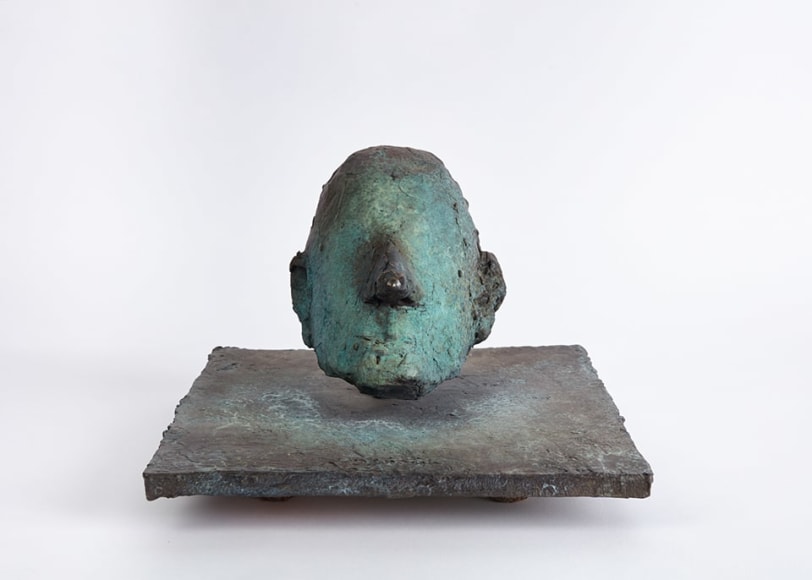Berggruen Gallery is pleased to present Nathan Oliveira: A Survey, 1959-2010, an exhibition of paintings, watercolors, monotypes, and sculptures by Bay Area artist Nathan Oliveira. This show marks the gallery’s thirteenth solo exhibition of Oliveira’s work since his first show at Berggruen in 1979. The exhibition will be on view September 6 through October 13, 2018. The gallery will host an opening reception on Thursday, September 6 from 5:00 to 8:00pm.
Spanning over a half-century, this exhibition highlights Oliveira’s iconic work from the late 1950s through his final years. The evolution of his artistic practice exists in his myriad subjects and styles across a range of media, yet an inherent sense of raw emotion and complexity unites his body of work to express Oliveira’s unique translation of the world around him. Highly influenced and inspired by artists that proceeded him, such as Rembrandt van Rijn, Francisco Goya, Auguste Rodin, Edvard Munch, Alberto Giacometti, Francis Bacon, and Max Beckmann, his passion was “for continuing an inner-directed artistic tradition attached to the human subject. His art represents a response to artists, both past and present, an ongoing dialogue with artists […]” (Selz, 2002). Olivera’s work is part of the continuum, a response to and interpretation of the past, as well as a place for the next generation from which to spring.
Oliveira does not follow a disciplined approach to painting or drawing but rather explores the spectrum of pure emotion and beauty achieved by artistic gesture. The physical act of creation is emphasized through textural compositions imbued with a sense of energy and motion, allowing expressive brushstrokes to bring to life a human figure, an animal, or a place (or “site,” as Oliveira calls it). The content and style of his work thus becomes a vehicle by which one can establish an intimate connection to the art object, as a certain tension between representation and abstraction incites emotional engagement and contemplation. The psychological probing of Oliveira’s work derives from the artist’s dynamic engagement with both his medium and his subject, for he does not merely create a representation but rather crafts an intimate moment between the viewer and the art object itself.
Thick, textured brushstrokes, volumetric pools of paint, deliberate and emotive color and jagged undulations of metal form a body of work grounded in an enigmatic evocation of raw and complex beauty, while vacant, decontextualized backgrounds invite the viewer to enter an otherworldly atmosphere outside of discernable space and time. As this exhibition demonstrates, embedded throughout Oliveira’s artistic output during these years is a probing of relationships between humanity, animals, and place–subjects continually reworked and reimagined to create a vision of life that is at once timeless and futuristic, capturing a universal figure or place, or as Oliveira relates it in an interview with Richard Whittaker in 2005, “[…] a perpetual, ongoing identity that is fundamental, and we are simply part of that.” While no single idiom nor style defines his artistic practice, at the heart of Oliveira’s painting and drawing is a powerful interplay of representation and abstraction. His graceful balance between the two tinges his body of work with a theatrical bravura that remains simultaneously elegant and formal, what Steven A. Nash describes as, “his own visual dramaturgy, blending expressionism and figuration, sensitive humanistic themes and urgent formal means,” resulting in a unique yet fundamentally human artistic vision.
Nathan Oliveira was born in Oakland, California in 1928 to a family of Portuguese immigrants. He studied painting and printmaking at the California College of Arts and Crafts (now the California College of the Arts, or CCAC) in Oakland, and in the summer of 1950 with Max Beckmann at Mills College in Oakland. After two years in the U.S. Army as a cartographic draftsman, he began teaching painting in 1955 at CCAC and drawing and printmaking at the California School of Fine Arts (now the San Francisco Art Institute, or SFAI). In 1959 Oliveira was the youngest painter included in the groundbreaking exhibition, New Images of Man, which included established artists such as Francis Bacon and Alberto Giacometti, at the Museum of Modern Art in New York. Since then he held numerous guest teaching appointments at various art schools and universities. He held a tenured teaching position at Stanford University from 1964 until he retired in 1995. During his career, surveys of his work were held at the Art Gallery of the University of California, Los Angeles (1963); Oakland Museum of California (1973); California State University, Long Beach (1980); San Francisco Museum of Modern Art (1984); California Palace of the Legion of Honor in San Francisco (1997); and the San Jose Museum of Art (2002). Oliveira was elected to the American Academy of Arts and Letters in 1994 and has received many other awards, including a Guggenheim Fellowship, two honorary doctorates, and, in 2000, membership in a distinguished order conferred by the government of Portugal. His work is collected nationally and is held in the collections of many distinguished institutions, including the Art Institute of Chicago; the Carnegie Institute, Pittsburgh; the Fine Arts Museums of San Francisco; the Los Angeles County Museum of Art; the Metropolitan Museum of Art, New York; the Museum of Modern Art, New York; the National Gallery of Art, Washington, DC; and the San Francisco Museum of Modern Art. Oliveira passed away in 2010 at his home in Palo Alto, California.
Nathan Oliveira: A Survey, 1959-2010, September 6 – October 13, 2018. On view at 10 Hawthorne Street, San Francisco, CA 94105. Images and preview are available upon request. For all inquiries, please contact the gallery by phone (415) 781-4629 or by email info@berggruen.com.

























